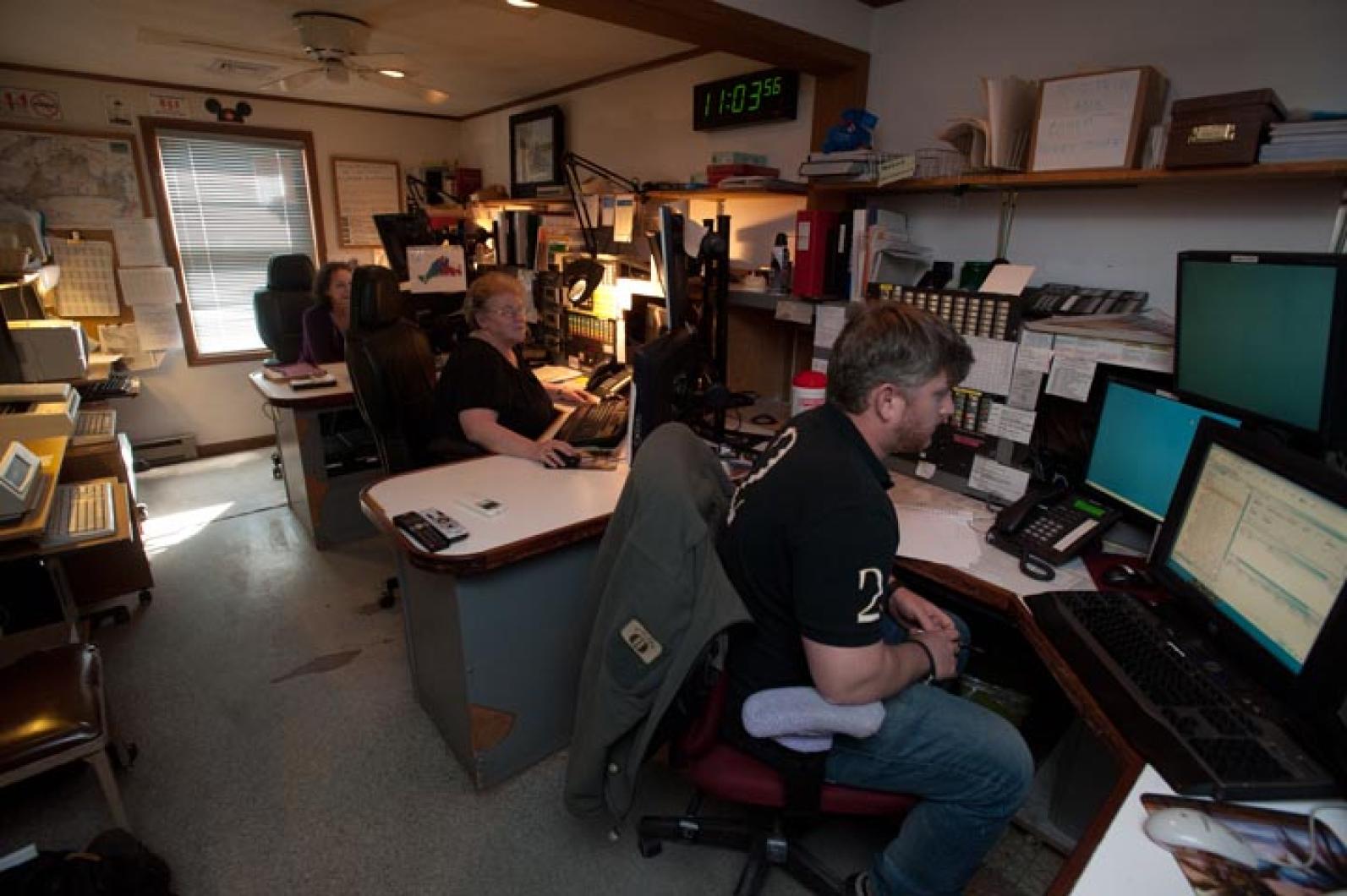The county communications center, a hub for all dispatches from police, fire and other public safety agencies, is about to go underground. In two months, the $1.5 million project to expand the space and further improve services to the county will relocate the center from a one-level, too-small ranch house at the airport into the large basement of the county’s Community Correction Center next door.
Nearly every police call, every report of fire and a whole lot more travels through the center, where three dispatchers currently send the calls to the appropriate agencies. The dispatch center—jammed with computer screens and a mass of electronics—processes more information than any other place on the Island. It operates 24 hours a day, seven days a week.
The only visible, above-ground part of the project will be a replacement antenna. Sheriff Michael McCormack and his staff are pursuing the installation of the 116-foot tower before the equipment and the staff make the physical move. They have set April 1 as the goal for the move, and there will be an open house sometime in the spring.
The public open house will be an eye- opener, especially to anyone who has ever made a call for help. The new communication center is twice the size of its predecessor, with a lot more wiggle room for future growth or change.
This will be the third move—and fourth location—for the communications center in the sheriff’s career with the county. The first communication center, going back at least 40 years, was located at the jail, the house of correction on Main street. Later it was moved to a room in the tower of the old airport terminal building, which quickly proved inadequate. The center has spent the last 26 years at its present site, a 1,500 square foot one-floor ranch house.
“When we moved to the new ranch house,” the sheriff said, “we thought at the time it was state-of-the-art.” But with all the changes, not just on the Island, but in the way police, fire and emergency medical personnel do their business, today it seems ancient. Added to that are the advent of cell phones, huge changes in digital communications, more summer and year-round homes and more buildings with complex security systems. The present facility is now overcrowded, inadequate and ready for change.
“Every year there seem to be more agencies coming on board. There is a never ending line of people asking if they can get into our system. We’ve been talking to the VTA about having emergency radios in their buses,” the sheriff said. “All the time, the demands are getting greater. The Vineyard gets dignitaries, and depending on the level, they bring a whole raft of security issues with them. When that happens the communications center does get involved.”
The sheriff sees the new facility as a huge collaboration between the county and the state. Over a span of three years, he received three state grants, totalling $1.5 million.
The cost of the facility is essentially borne by phone customers in the Commonwealth. “Everybody who gets a telephone bill pays a 75 cent surcharge on their phone bill for emergency 911 service,” Sherriff McCormack said. “All that money goes into a pool and the money is spent by the state 911 Department. They take the money and make it available for agencies that run communications centers across the state. Funds are used to cover the cost of training, operations and construction.”
The Community Corrections Center — measuring 3,000 square feet at street level and another 3,000 square feet underground — was built in 2005 primarily to provide education for people convicted of certain crimes as an alternative to incarceration. The above-ground, educational floor “is for those who have committed a crime, [and/or] who have suffered from substance abuse issues, to receive rehabilitation programing and life skills and job training,” Sherriff McCormack said.
The idea of putting the communications center underground, in a basement — primarily for security and weather-protection purposes — goes back years. When it was built, the sheriff said he wanted the basement to house the dispatch center.
The ceilings are high and the walls are white. Overhead, basement-style windows allow in only small slivers of outside light. Artificial lighting is controlled by the dispatchers, who usually like it low, the sheriff said.
The new dispatch center has more than adequate space for four dispatchers, one more than the capacity at the old site. Usual access to the basement is by elevator, and security is tight as a “bunker,” according to Sheriff McCormack.
There is room for a kitchen with lots of counter space. There is also a bunk room, which gives the employees a place to sleep or nap, should the need arise. Dispatchers can hunker down for more than a day, in the event of a weather crisis. Linda Cook, a dispatcher for the center for 25 years, said the bunk room addresses an important issue, getting needed sleep, particularly when an employee may have only eight hours of free time between two work shifts. “Imagine, driving home, settling in, taking a shower and going to bed to get sleep. You are wide awake. Maybe you end up with four hours of sleep for the night,” she said. “If you know you have a quick turnaround coming, you can sleep in the bunk room. Once you shut that door, it is quiet.”




Comments
Comment policy »